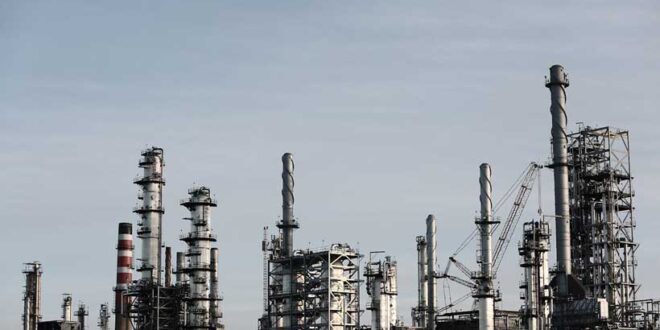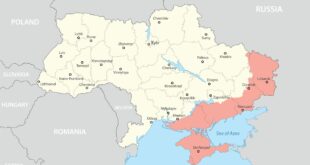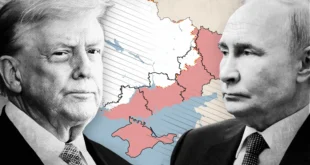Crude oil has long been regarded as the lifeblood of the global economy, with its price fluctuations having profound effects on industries, nations, and consumers worldwide. Given its centrality to economic activity, any geopolitical instability, particularly in the Middle East, can lead to significant volatility in crude oil prices. The Hezbollah-Israel ceasefire is one such event that has once again brought the vulnerability of oil prices to geopolitical risk into sharp focus.
The volatile prices of crude oil due to the Hezbollah-Israel ceasefire reflect the region’s deep-seated political complexities and the oil market’s sensitivity to such disruptions. This article will explore how the ceasefire has impacted oil prices, analyze the historical context of oil market instability tied to Middle Eastern conflicts, and assess the broader implications of the ceasefire for global energy markets. In addition, the article will examine the role of speculative trading, supply chains, and the global demand-supply equation in shaping the crude oil market’s response to the Hezbollah-Israel ceasefire.
The Middle East and Its Centrality to the Global Oil Market
The Middle East, home to some of the world’s largest crude oil reserves, plays a critical role in the global oil supply. Countries like Saudi Arabia, Iran, Iraq, and the United Arab Emirates are key producers, and disruptions in this region have historically led to significant fluctuations in oil prices. The geopolitical tensions between Israel and Hezbollah in Lebanon, along with broader regional conflicts, further exacerbate the situation (Fattouh & Economou, 2020).
Oil prices are particularly sensitive to any sign of conflict or unrest in the Middle East due to concerns about supply disruptions. Even if the countries directly involved in the conflict are not significant oil producers, instability in the region can raise fears about the security of shipping routes, particularly the Strait of Hormuz. The Strait of Hormuz is a vital passage for global oil trade, with approximately 20% of the world’s oil passing through it. Any disruption in this route can cause a significant spike in prices (EIA, 2021).
The Hezbollah-Israel Conflict and the Recent Ceasefire
Hezbollah, a political and military group based in Lebanon, has been in conflict with Israel for decades. The tensions between the two entities have been characterized by periodic escalations, often resulting in cross-border skirmishes, airstrikes, and military confrontations. Hezbollah, backed by Iran, is regardedby Israel as a significant threat due to its military capabilities and its stated goal of opposing Israeli policies (Mousavi, 2023).
In recent years, these tensions have escalated, leading to a more dangerous and unstable situation in the region. In the summer of 2023, after a series of violent exchanges that threatened to plunge Lebanon and Israel into a full-scale war, a ceasefire was negotiated with the help of international mediators. The ceasefire has provided temporary relief from the violence, but it remains fragile, with both sides expressing deep mistrust of one another (Saab, 2021).
How the Ceasefire Has Impacted Crude Oil Prices
The ceasefire between Hezbollah and Israel, while reducing immediate fears of an all-out war, has nonetheless contributed to volatility in the crude oil market. The potential for renewed hostilities remains high, keeping traders on edge and pushing oil prices up or down depending on the day’s developments. Oil prices are particularly susceptible to uncertainty, and in times of geopolitical instability, traders tend to react quickly, either by hoarding oil futures or selling off assets depending on perceived risks.
In the initial days following the ceasefire, oil prices experienced a temporary decline as fears of a full-scale war in Lebanon and Israel subsided. However, this drop in prices was quickly reversed as traders began to assess the fragile nature of the truce. Speculative trading based on worst-case scenarios, such as the ceasefire breaking down or the conflict expanding to other oil-producing nations in the region, has contributed to continued price swings (Fattouh & Imsirovic, 2020).
Another significant factor influencing crude oil prices is the potential involvement of other regional powers, such as Iran. Hezbollah’s close ties to Iran raise concerns about a wider regional conflict, particularly given Iran’s role as a major oil producer. If the ceasefire were to collapse and Iran became more directly involved, the implications for global oil supplies could be catastrophic, further driving up prices (Mousavi, 2023).
Historical Context: Oil Price Volatility and Middle Eastern Conflicts
The relationship between oil prices and geopolitical conflicts in the Middle East is well-established. Historically, oil prices have experienced significant spikes during times of war and political unrest in the region. For example, the Yom Kippur War in 1973 led to the Arab oil embargo, causing oil prices to quadruple within a few months. Similarly, the Iranian Revolution in 1979 and the subsequent Iran-Iraq War in the 1980s caused massive disruptions to global oil supplies, leading to skyrocketing prices (Gholz & Press, 2018).
More recently, the Gulf Wars and the Arab Spring protests of 2010-2011 led to significant oil price volatility, as investors feared disruptions to supplies from key oil-producing countries like Iraq and Libya. The price of crude oil is deeply influenced by the perception of risk in the Middle East, given the region’s dominance in global oil production (Fattouh & Imsirovic, 2020).
The Hezbollah-Israel ceasefire must be understood within this broader historical context of Middle Eastern conflicts and oil price volatility. While Lebanon is not an oil producer, the strategic location of the conflict, coupled with Hezbollah’s ties to Iran, means that the ceasefire has significant implications for oil markets. The possibility of the conflict escalating into a broader regional war has kept oil traders on edge, contributing to continued price instability.
Speculative Trading and Oil Price Volatility
One of the primary drivers of crude oil price volatility in the wake of the Hezbollah-Israel ceasefire has been speculative trading. In times of geopolitical instability, investors tend to react to even small changesin the security environment, driving up or down oil prices based on their expectations of future events (Kaufmann & Ullman, 2017). This speculative behavior is particularly pronounced in the oil futures market, where traders buy and sell contracts based on predictions of future supply and demand conditions.
In the case of the Hezbollah-Israel ceasefire, speculative traders have been closely monitoring the situation for any signs of a breakdown in the truce. If the ceasefire were to collapse, the potential for a wider regional conflict could lead to significant disruptions in oil supplies, particularly if shipping routes like the Strait of Hormuz were affected. As a result, even minor developments in the region have led to sharp swings in oil prices as traders adjust their positions to account for the increased risk (Fattouh & Economou, 2020).
Global Supply Chains and the Impact of the Ceasefire
Another key factor influencing crude oil prices in the wake of the Hezbollah-Israel ceasefire is the potential disruption to global supply chains. The Middle East is not only a key producer of crude oil but also a critical transit point for global energy supplies. Disruptions in the region can have ripple effects throughout the global supply chain, leading to shortages and higher prices in other parts of the world (EIA, 2021).
The Strait of Hormuz, in particular, is a chokepoint for global oil supplies, with approximately 21 million barrels of oil passing through the strait each day. Any disruption to this critical shipping route, whether due to a renewed conflict between Hezbollah and Israel or broader regional tensions, could have a devastating impact on global oil supplies. The fear of such a disruption has kept oil prices elevated even in the aftermath of the ceasefire, as traders continue to weigh the risks of supply chain disruptions (Gholz & Press, 2018).
Moreover, the potential for a wider regional conflict involving other oil-producing nations, such as Iran or Saudi Arabia, remains a significant concern. If the ceasefire were to collapse and lead to broader hostilities, the impact on global supply chains would be severe, driving oil prices even higher. This uncertainty has contributed to continued volatility in the oil market, with prices fluctuating based on the perceived likelihood of such a scenario (Fattouh & Imsirovic, 2020).
The Role of Global Demand and Supply Dynamics
While the Hezbollah-Israel ceasefire has undoubtedly contributed to crude oil price volatility, it is important to consider the broader global demand-supply dynamics at play. The global oil market is influenced by a complex interplay of factors, including supply levels from major producers, demand growth in emerging economies, and the ongoing transition to renewable energy sources.
In recent years, global demand for crude oil has been relatively stable, although the COVID-19 pandemic caused a sharp decline in demand in 2020. Since then, demand has gradually recovered, driven by economic growth in countries like China and India (IEA, 2022). However, the supply side of the equation has been more volatile, with disruptions in key oil-producing regions and the ongoing transition to renewable energy sources influencing the market.
In the case of the Hezbollah-Israel ceasefire, the potential for supply disruptions in the Middle East has exacerbated concerns about the stability of global oil supplies. The global oil market is already tight, with limited spare capacity among major producers. Any disruption to supplies from the Middle East, whether due to the conflict in Lebanon or broader regional tensions, could have significant consequences for global oil prices (Kaufmann & Ullman, 2017).
Broader Implications for Global Energy Markets
The volatile prices of crude oil in the wake of the Hezbollah-Israel ceasefire have broader implications for global energy markets. One of the key challenges facing the global economy is the need to transition away from fossil fuels and toward renewable energy sources. However, the continued volatility in oil prices, driven by geopolitical risks, complicates this transition.
On the one hand, high oil prices can incentivize investment in renewable energy sources, as consumers and businesses seek to reduce their dependence on fossil fuels. However, the volatility of oil prices can also create uncertainty for investors, making it difficult to plan for the long-term transition to cleaner energy sources (IEA, 2022). Moreover, the potential for supply disruptions in the Middle East underscores the continued importance of crude oil to the global economy, even as the world seeks to reduce its reliance on fossil fuels.
In the case of the Hezbollah-Israel ceasefire, the potential for a renewed conflict in the Middle East highlights the ongoing risks associated with the global dependence on oil. The region’s centrality to global oil supplies means that any instability can have far-reaching consequences for energy markets, economies, and consumers worldwide (Fattouh & Imsirovic, 2020).
Conclusion
The volatile prices of crude oil in the wake of the Hezbollah-Israel ceasefire reflect the deep-rooted geopolitical complexities of the Middle East and the global oil market’s sensitivity to such disruptions. While the ceasefire has provided temporary relief from the immediate threat of a broader regional conflict, the potential for renewed hostilities continues to weigh on oil prices. Speculative trading, global supply chains, and the broader demand-supply dynamics of the oil market have all contributed to continued price volatility.
The Hezbollah-Israel ceasefire underscores the continued importance of the Middle East to global energy markets and the need for a stable geopolitical environment to ensure the reliable supply of crude oil. However, the fragility of the ceasefire, coupled with the potential for broader regional conflicts, means that oil prices are likely to remain volatile for the foreseeable future. As the world grapples with the transition to renewable energy sources, the ongoing risks associated with the Middle East’s geopolitical instability will continue to shape the global oil market.
 Geostrategic Media Political Commentary, Analysis, Security, Defense
Geostrategic Media Political Commentary, Analysis, Security, Defense





